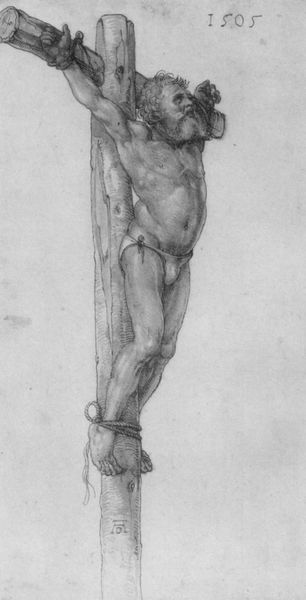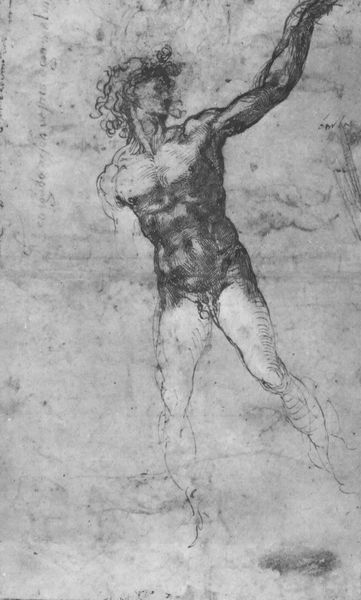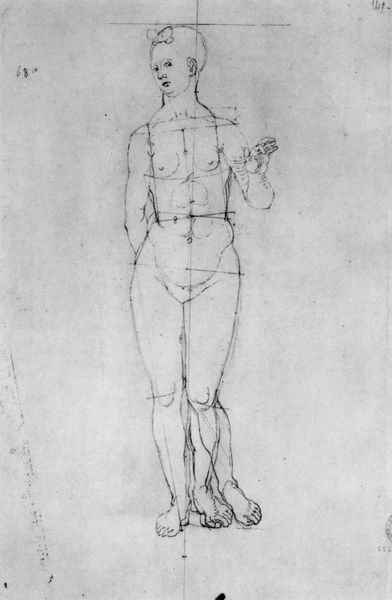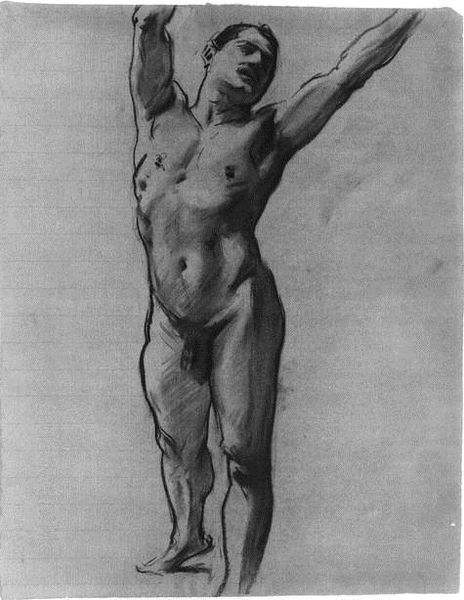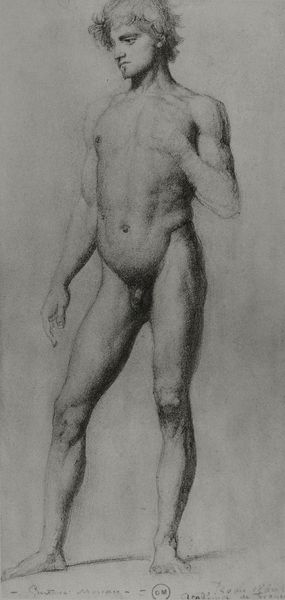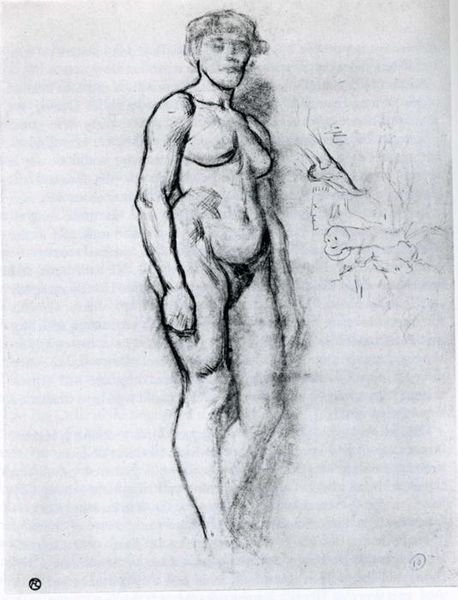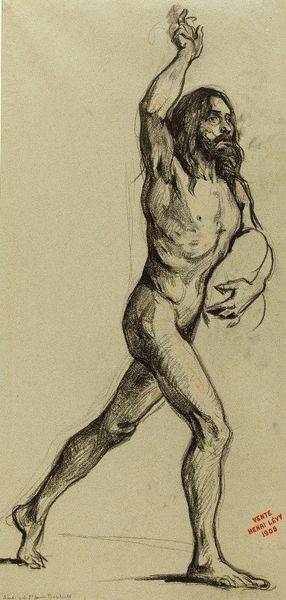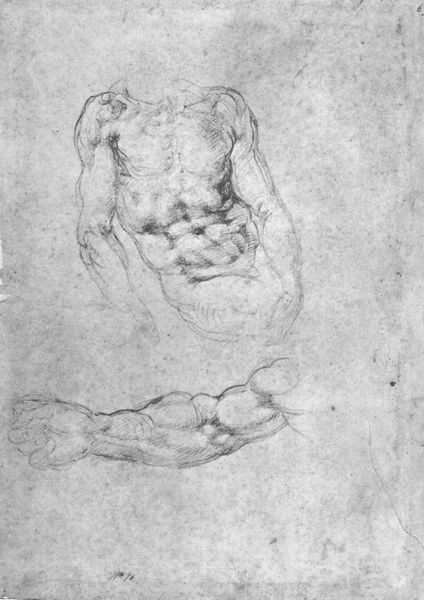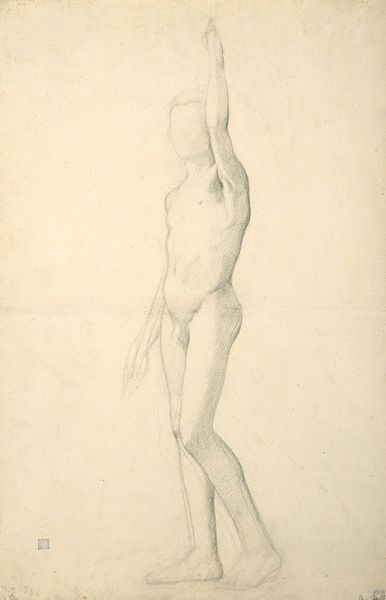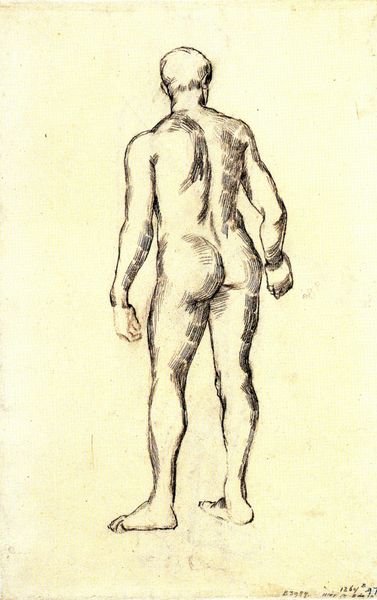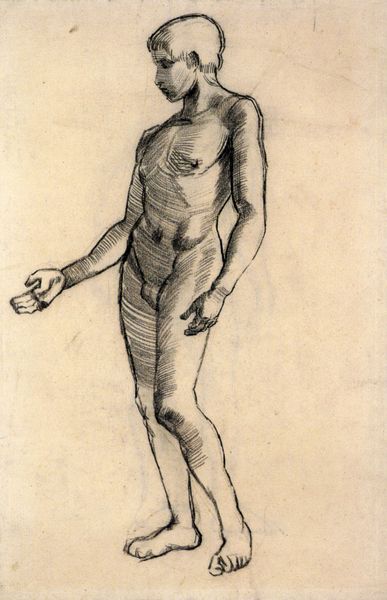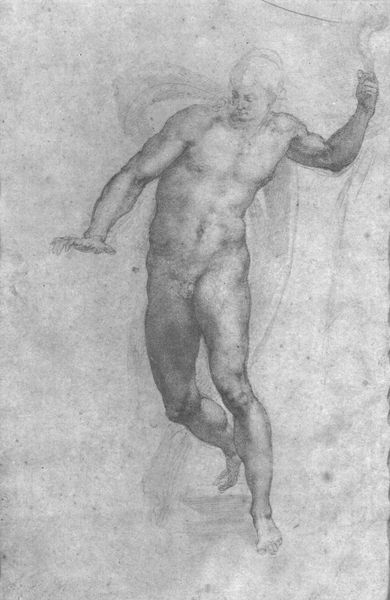
drawing, pencil, graphite
#
portrait
#
pencil drawn
#
drawing
#
self-portrait
#
pencil sketch
#
charcoal drawing
#
figuration
#
form
#
pencil drawing
#
pencil
#
christianity
#
human
#
line
#
graphite
#
portrait drawing
#
crucifixion
#
history-painting
#
northern-renaissance
#
nude
#
graphite
Copyright: Public domain
Editor: This drawing, likely by Albrecht Dürer and seemingly from around 1505, depicts a nude man on a cross in graphite or pencil. The raw emotion and detailed depiction of the figure are striking. How do you interpret this work? Curator: This work carries so much historical weight. Notice the man's distorted features and strained muscles. Doesn’t it remind you of images from morality plays or Passion narratives popular in the Northern Renaissance? Dürer masterfully employs the symbol of the cross, but consider what it represents here. Is it just an emblem of Christian faith, or does it evoke something more? Editor: It definitely evokes suffering, but I also sense a struggle – both physical and perhaps spiritual. The contorted body is not idealized; it feels very human, very vulnerable. Curator: Precisely! The cross is both a literal instrument of torture and a potent symbol of sacrifice and redemption. This work could invite contemplation on suffering's multifaceted meaning. Dürer might be highlighting the complex, and sometimes contradictory, roles individuals play in grand historical narratives, in religious histories. Do you perceive an implicit cultural critique? Editor: Perhaps the unflinching realism challenges viewers to confront uncomfortable truths about human nature, the reality of crucifixion. I’d not thought of the historical narratives… This gives me a lot to reflect on. Curator: Indeed. And by engaging with those difficult visual symbols, we tap into the cultural memory Dürer has left for us. The dialogue between faith, suffering, and humanity continues.
Comments
No comments
Be the first to comment and join the conversation on the ultimate creative platform.
